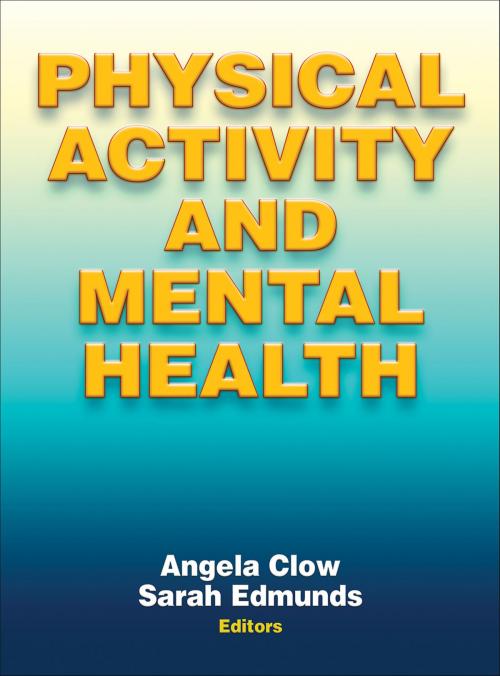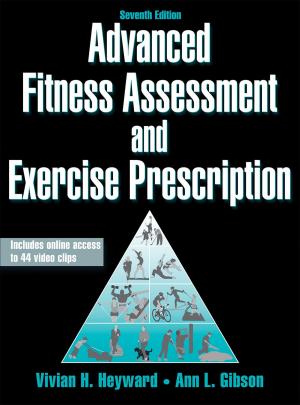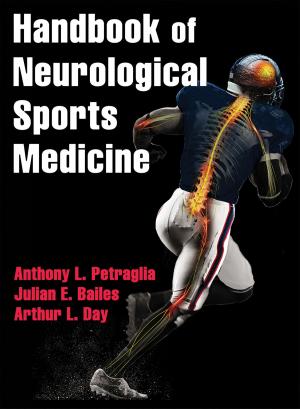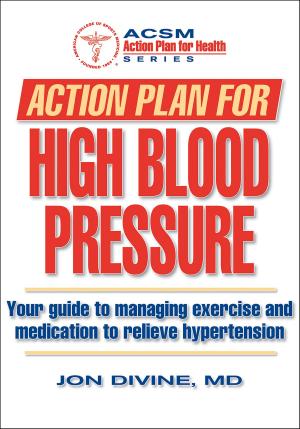Physical Activity and Mental Health
Nonfiction, Health & Well Being, Medical, Reference, Public Health| Author: | Angela Clow, Sarah Edmunds | ISBN: | 9781492583028 |
| Publisher: | Human Kinetics, Inc. | Publication: | November 8, 2013 |
| Imprint: | Human Kinetics, Inc. | Language: | English |
| Author: | Angela Clow, Sarah Edmunds |
| ISBN: | 9781492583028 |
| Publisher: | Human Kinetics, Inc. |
| Publication: | November 8, 2013 |
| Imprint: | Human Kinetics, Inc. |
| Language: | English |
With contributions from internationally renowned experts, Physical Activity and Mental Health presents research illustrating how the use of physical activity can enhance well-being and reduce the impact of potentially debilitating mental health conditions. Written for students, researchers, and professionals in exercise science, fitness, and health care fields, Physical Activity and Mental Health details the factors that influence the relationship between mental health and physical activity as well as the benefits of physical activity in dealing with mental illnesses such as Alzheimer’s disease, depression, schizophrenia, and addictive behaviors. Readers will learn how promotion of physical activity can lead to a greater sense of well-being or act as a medical intervention. Exercise readiness checklists, mental health checklists, and population-specific sample activity plans assist in creating and implementing exercise programs to meet the needs of patients or clients.
Physical Activity and Mental Health begins with an exploration of the brain systems that are affected by physical activity and how these affect mental well-being. The text continues with discussion of the following topics:
• An overview of physical activity guidelines and the challenges in measuring physical activity in a mental health context
• How physical activity promotes well-being across the life span and among socioeconomic statuses
• How physical activity and exercise can improve quality of life and recovery in people with a range of mental and physical health conditions
• An examination of exercise dependence, including its relationship with eating disorders and body dysmorphia and the negative impacts of excessive exercise on mental health
Learning features in each chapter assist both the student and practitioner in learning and referencing the information. A chapter outline and an editors’ introduction provide an overview of the structure and content. Key concepts cover important ideas and definitions. Evidence to Practice boxes review current knowledge and theory from a perspective of practical application. Each chapter concludes with a summary and list of references, and additional highlight boxes throughout the text accent important topics.
Physical Activity and Mental Health integrates theoretical and applied approaches with practical tips on exercise programs, measurement strategies, and methodological considerations. Balancing theory and practice, this resource assists students, researchers, and practitioners in understanding the links between physical activity, well-being, and mental health and how to apply this information for the benefit of patients and clients across a range of populations and conditions.
With contributions from internationally renowned experts, Physical Activity and Mental Health presents research illustrating how the use of physical activity can enhance well-being and reduce the impact of potentially debilitating mental health conditions. Written for students, researchers, and professionals in exercise science, fitness, and health care fields, Physical Activity and Mental Health details the factors that influence the relationship between mental health and physical activity as well as the benefits of physical activity in dealing with mental illnesses such as Alzheimer’s disease, depression, schizophrenia, and addictive behaviors. Readers will learn how promotion of physical activity can lead to a greater sense of well-being or act as a medical intervention. Exercise readiness checklists, mental health checklists, and population-specific sample activity plans assist in creating and implementing exercise programs to meet the needs of patients or clients.
Physical Activity and Mental Health begins with an exploration of the brain systems that are affected by physical activity and how these affect mental well-being. The text continues with discussion of the following topics:
• An overview of physical activity guidelines and the challenges in measuring physical activity in a mental health context
• How physical activity promotes well-being across the life span and among socioeconomic statuses
• How physical activity and exercise can improve quality of life and recovery in people with a range of mental and physical health conditions
• An examination of exercise dependence, including its relationship with eating disorders and body dysmorphia and the negative impacts of excessive exercise on mental health
Learning features in each chapter assist both the student and practitioner in learning and referencing the information. A chapter outline and an editors’ introduction provide an overview of the structure and content. Key concepts cover important ideas and definitions. Evidence to Practice boxes review current knowledge and theory from a perspective of practical application. Each chapter concludes with a summary and list of references, and additional highlight boxes throughout the text accent important topics.
Physical Activity and Mental Health integrates theoretical and applied approaches with practical tips on exercise programs, measurement strategies, and methodological considerations. Balancing theory and practice, this resource assists students, researchers, and practitioners in understanding the links between physical activity, well-being, and mental health and how to apply this information for the benefit of patients and clients across a range of populations and conditions.















